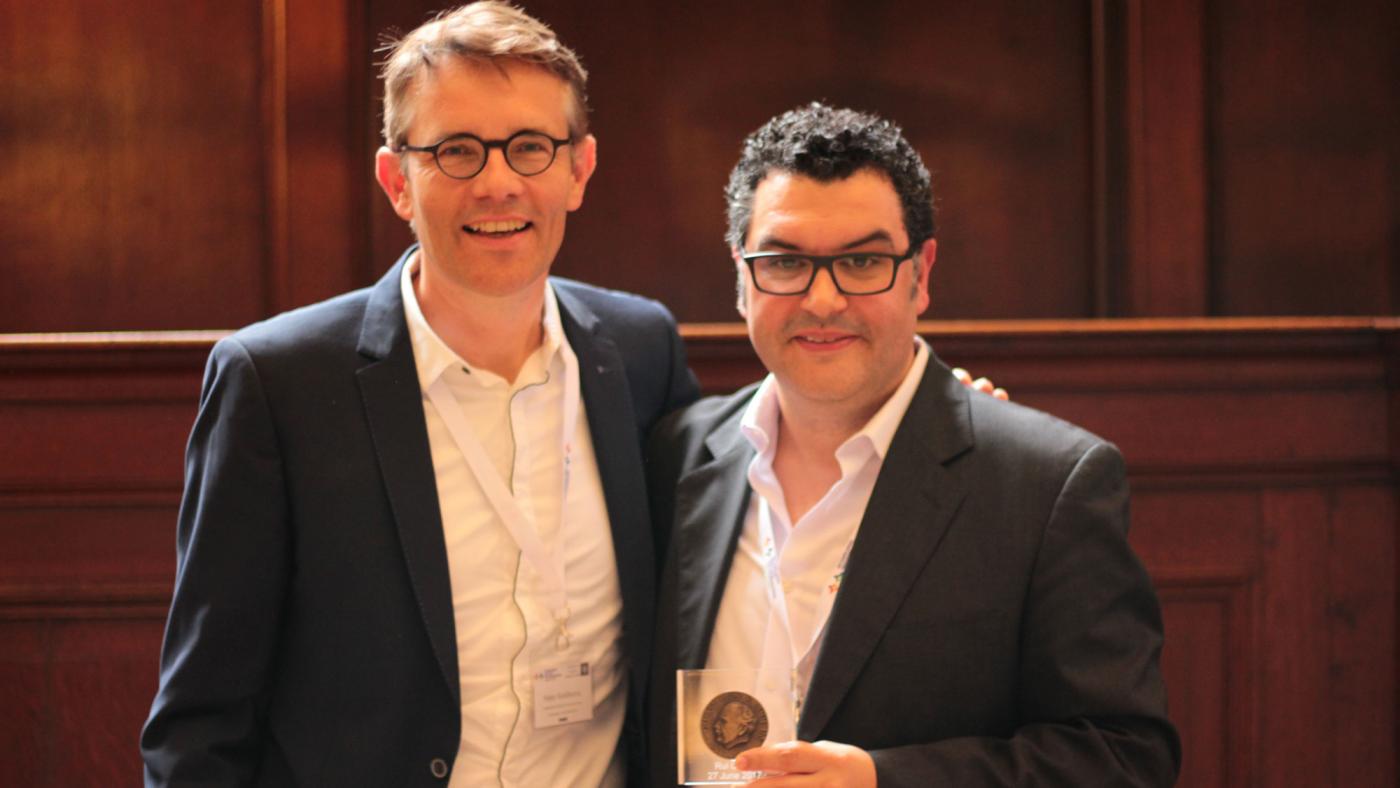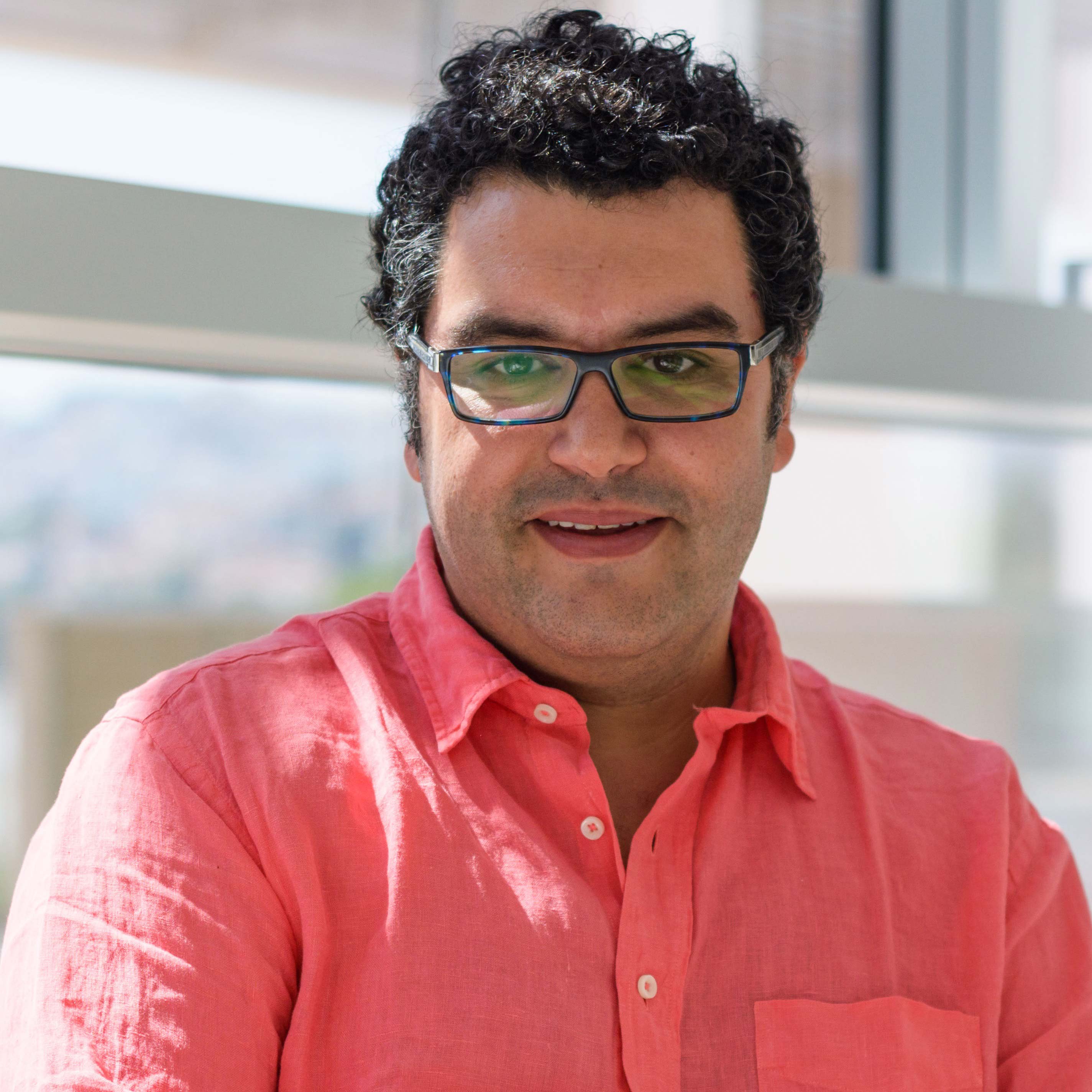Think back to the first time you played baseball, or sat down to play the piano. Chances are, you weren’t very good. But then, after much practice, your bat struck the ball, or your fingers hit the keys, in exactly the right way. Your brain had found the perfect combination of movements that yielded success. Perhaps, with a little bit of practice, you were able to repeat it. Eventually, you may become so skilled that the action becomes second nature for you. This is all thanks to your brain. And neuroscientist Rui Costa, PhD, who studies how the brain learns to master new movements, is working to understand how this is possible.
Dr. Costa, a principal investigator at Columbia’s Mortimer B. Zuckerman Mind Brain Behavior Institute, was honored today by the Royal Netherlands Academy of Arts and Sciences with the Ariëns Kappers Award for outstanding contributions to the field of neuroscience. We spoke with Dr. Costa about how the brain guides the body to master new movements, how his work has yielded insights into a broad range of brain disorders.
In your lab, you study a specific type of movement, that which is skilled, such as learning to play a sport or an instrument. What interests you about this type of movement?
Think about what happens when you accidentally touch a hot plate. Your hand immediately recoils. But the key is that you didn’t think about it. Your response is immediate, or what we call innate. There’s an entire area of neuroscience devoted to understanding how that happens. But my work has a different focus.
I am fascinated by how we develop skilled movements — whether it’s a baby learning to hold her own bottle or a musician deftly playing the piano. We all have our own ways of learning to do these tasks, what are called our ‘repertoires.’ In my lab, we investigate how the brain builds that repertoire over time, so that eventually, those complex movements become second nature, and turn into habits.
Why do skilled movements like these turn into habits over time?
Let’s take a simple example: the act of opening a door. If we repeat that same action, in the same context over and over again, it makes sense that the brain automates that task. For example, when approaching that door, you shouldn’t have to ask yourself each time: ‘How do I open it?’ You should be able to approach the door and open it without thinking, which is a good thing. There is an evolutionary advantage to being able to quickly and accurately navigate familiar surroundings.
The real problem begins when your brain can’t adapt quickly when you encounter something new. Indeed, several years ago we discovered that when the body is under stress, the physical structure of the brain — and the strength of connections between brain regions — actually changes. This causes the brain to be biased towards the actions it has already learned, so it is less flexible when adapting to new situations. For example, if you are already stressed, and enter a new building you have never visited, you may accidentally press your home floor out of habit.
This is because under stress, the brain prefers to work with reliable rules. It doesn’t want to expend energy by weighing the consequences of trying something new. Hundreds of thousands of years ago, a particular stressor was likely relatively short lived (i.e. an advancing predator). But we found that in cases of chronic stress, this bias toward habits is constant, resulting in a more permanent change to the brain’s structure. This change negatively affects the brain’s ability to make decisions. These findings have helped us to understand that seemingly distinct brain processes — such as learning, decision making and movement — may actually be more intertwined than previously thought.
What has your research revealed about movement disorders such as Parkinson’s disease?
In simple terms, each movement we make can be broken up into a beginning (the initiation), a middle (the movement itself) and an end (the termination). Oftentimes, people with Parkinson’s disease are unable to initiate movement, but if someone helps them to get started, they can move just as well as someone without Parkinson’s. I’ve seen Parkinson’s patients easily ride a bike, once they’ve been given a gentle push.
The reason for this lies in the type of brain cells, or neurons, that die in Parkinson’s. If you measure the activity of these neurons in a healthy person, you’ll see spikes of activity at the beginning of a movement, and again at the end. But during the movement itself, their activity does not change much. This means that the neurons responsible for the movement itself must reside somewhere else in the brain — somewhere that remains unaffected by the disease. Could we harness the power of those neurons to boost a patient’s ability to move? That is something we are working to uncover.
Your work has also revealed that seemingly disparate conditions, such as Parkinson’s disease and some psychiatric disorders, may actually be connected. What have you uncovered?
To me, one of the most frustrating aspects of neuroscience is the separation of brain disorders into silos, when in fact there are so many shared mechanisms among them. For example, Parkinson’s disease is considered a movement disorder, and it most definitely is. But one of the disease’s most common symptoms is depression. We need to be investigating the relationship between Parkinson’s and depression — as well as any other syndromes — to see if we can find any common underlying mechanisms. This would be a critical step towards developing more effective therapies that don’t just treat these devastating symptoms, but the underlying causes
More broadly, we have to understand the brain as a system in order to successfully address the root causes of these disorders. This is exactly what we are doing at the Zuckerman Institute. By breaking down barriers between disciplines, forming collaborations with our counterparts in the world of medicine and neurology, we are already pushing the envelope when it comes to understanding and treating disease. I can’t wait to find out what’s next.


